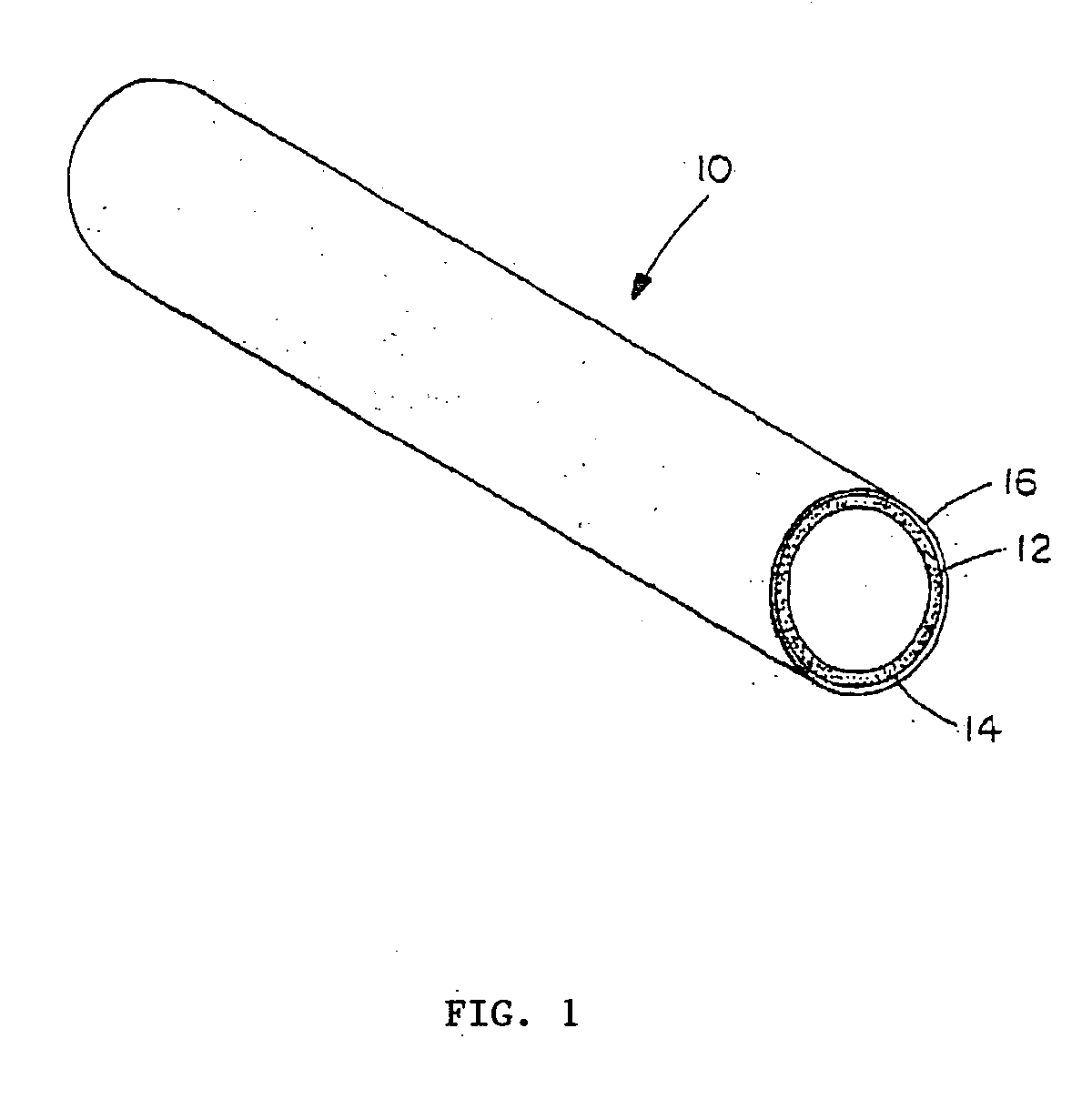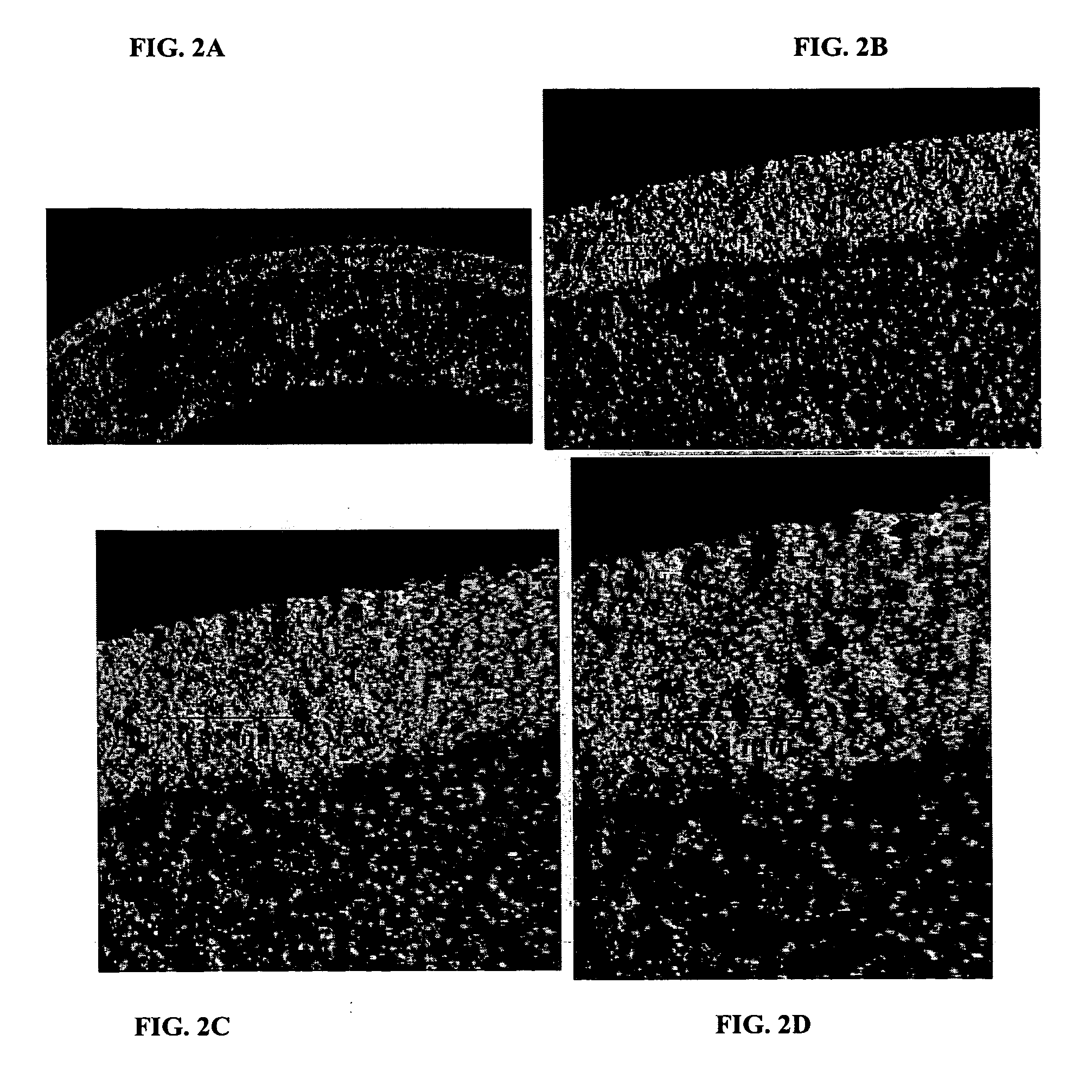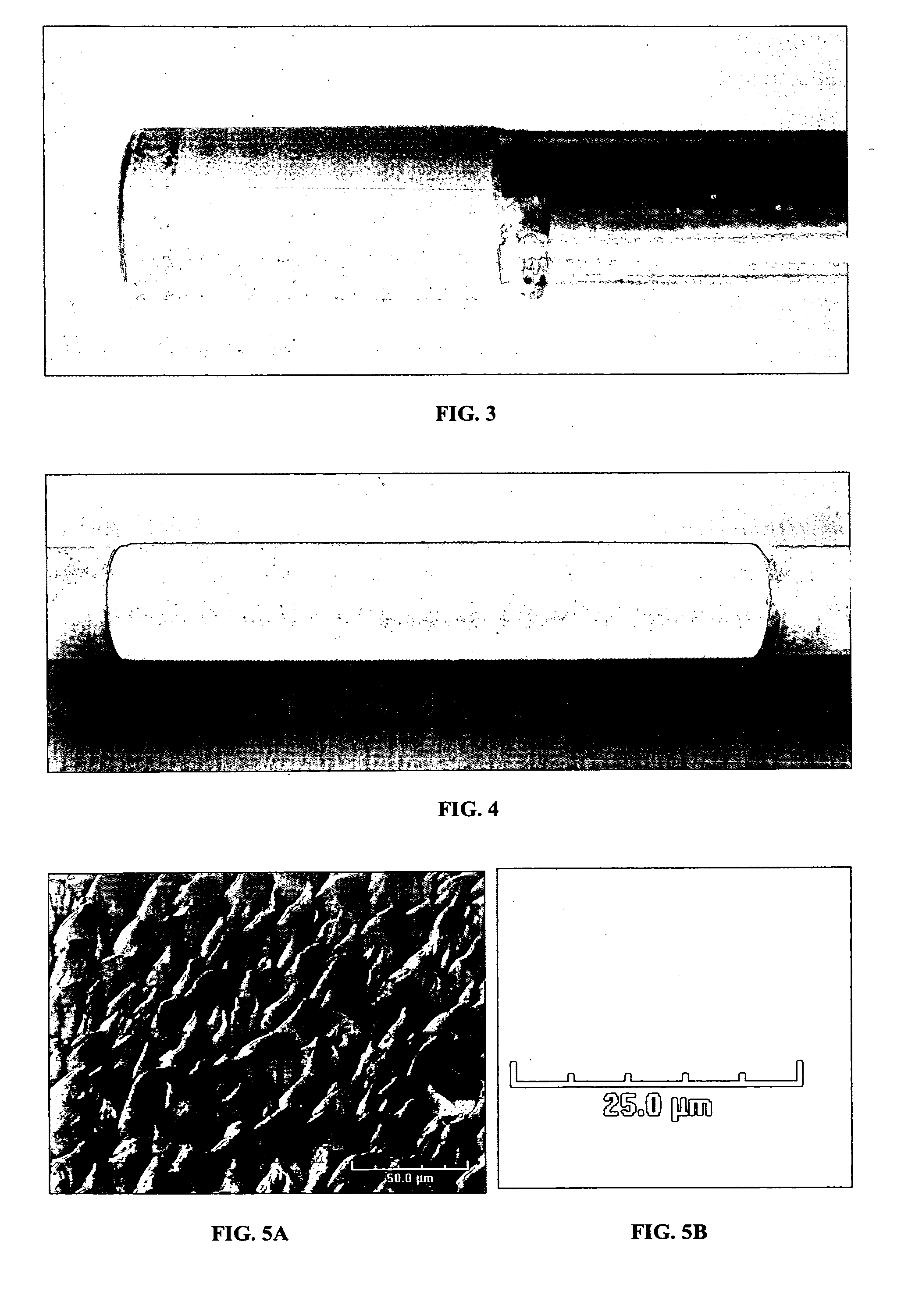Composite Structures with Porous Anodic Oxide Layers and Methods of Fabrication
a technology of porous anodic oxide and composite structures, applied in the direction of membranes, superimposed coating processes, separation processes, etc., can solve the problems of reducing the hydrogen permeability of the membrane, reducing the effective life of the typical composite gas separation module having a hydrogen-selective metal membrane bonded to a porous substrate, and generally unsuitable polymer membranes. , to achieve the effect of reducing manufacturing costs, reducing manufacturing costs, and improving gas flux
- Summary
- Abstract
- Description
- Claims
- Application Information
AI Technical Summary
Benefits of technology
Problems solved by technology
Method used
Image
Examples
example 1
[0112]This example describes the preparation of thin aluminum layers bonded to metal substrate surfaces.
[0113]A bonded aluminum layer was formed by sputtering aluminum metal onto the outside surface of a 0.1 micron grade porous 316L stainless steel (“PSS”) substrate tube manufactured by Mott Metallurgical Corporation. FIGS. 2A to 2D are optical micrographs of a cross section of the PSS tube under various magnifications. FIG. 3 shows a 0.5 inch O.D. (outside diameter) PSS tube assembly having about 176 microns (determined gravimetrically) of aluminum metal sputtered onto a PSS tube (surface area 10 cm2).
[0114]A bonded aluminum layer was formed by sputtering aluminum metal onto the outside surface of a 0.1 micron grade porous INCONEL® substrate tube. FIG. 4 shows the 1.0 inch O.D. INCONEL® tube assembly that was made by sputtering aluminum metal onto the INCONEL® tube (surface area 120 cm2) for an aluminum thickness of 60 microns (determined gravimetrically).
example 2
[0115]This example describes formation of porous anodic aluminum oxide layers by anodic oxidation of aluminum surfaces.
[0116]The aluminum surface of an aluminum foil (5.5 cm2, 2 millimeters thick) was degreased in acetone and then ultrasonically cleaned. Next, the aluminum foil was rinsed in deionized (“DI”) water and etched in 3.0 mole / liter (mol / L) sodium hydroxide (NaOH) until bubbles occurred over the surface. The aluminum foil was then cleaned ultrasonically in DI water. The aluminum surface was then electropolished in a perchloric acid and ethanol mixture (70% HClO4 and C2H5OH at 1:3) at 20 volts (V) for 5 minutes. FIGS. 5A and 5B are SEM images of the aluminum surface before electropolishing (FIG. 5A) and after electropolishing (FIG. 5B). FIG. 6 is a photograph of an aluminized PSS tube (surface area 10 cm2) aluminized with 176 microns of metal as described in Example 1 after electropolishing.
[0117]Experiments were performed wherein an anodic aluminum layer was formed on a cl...
example 3
[0125]This example describes the formation of composite gas-separation module according to one embodiment of the present invention.
[0126]An aluminized 0.5 inch O.D. PSS tube assembly was used having a porous part length of about 1 inch and a gravimetrically estimated aluminum metal thickness of 176 microns. FIG. 3 is a picture of the assembly. The assembly was cleaned with acetone.
[0127]The aluminized PSS tube was electropolished using a four electrode configuration in a glass cylinder. The aluminum metal-coated PSS tube was used as the anode. Three 0.25 inch O.D. aluminum rod cathodes were symmetrically placed around the anode. The distances between the anode surface and the cathodes were approximately 0.375 inch. The electropolishing was carried out in a voltage range of 6.7-5.0 V DC for five minutes. The initial voltage on the electrodes without electrolyte solution was set at 20 V DC. The electrolyte solution used for the electropolishing was a mixture of 70% HClO4 and C2H5OH in...
PUM
| Property | Measurement | Unit |
|---|---|---|
| temperatures | aaaaa | aaaaa |
| pressure | aaaaa | aaaaa |
| temperature | aaaaa | aaaaa |
Abstract
Description
Claims
Application Information
 Login to View More
Login to View More - R&D
- Intellectual Property
- Life Sciences
- Materials
- Tech Scout
- Unparalleled Data Quality
- Higher Quality Content
- 60% Fewer Hallucinations
Browse by: Latest US Patents, China's latest patents, Technical Efficacy Thesaurus, Application Domain, Technology Topic, Popular Technical Reports.
© 2025 PatSnap. All rights reserved.Legal|Privacy policy|Modern Slavery Act Transparency Statement|Sitemap|About US| Contact US: help@patsnap.com



